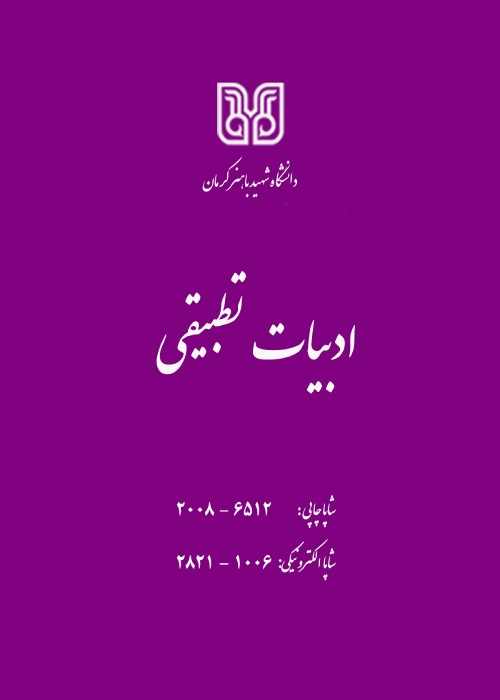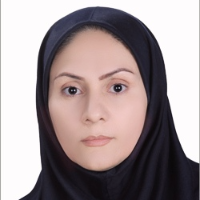Domestication in Poetry Translations of "The Crow and the Fox" Fable by La Fontaine in moving from "extra - system" to "system" based on Lotman's theory
One of the grounds of changing contemporary literature in Iran is translation or interpretation of foreign literary works which studying that can express the necessities, the creativities and the harms of this category well. Sometimes Contemporary poets have conformed or idiomatically domesticated the component parts of original context to literary and cultural requirements of Persian speaking community by displacing, increasing and decreasing them. The present article is based on expressing domestication methods in moving from "extra - system" (original context) to "system" (target context) and understanding the poets success or unsuccess in translating foreign literary works to Persian poem according to Yuri Lotman's theory and here we just study poetic translations of an fable entitled "The Fox and the Crow" by Lafontaine as example.
This research has been performed by a descriptive method and content analysis & the relationship quality among the culture elements with the context and extra – context background of the original work compared to its translations has been expressed by Lotman's semiotic theory of culture. It has been tried to show the creativities and deficiencies of the new texts against the original text while referring to different methods and ways of domestication and brief comparison of contemporary poets translations from "The Crow and the Fox" story by Lafontaine.
Nasim Shomal, Iraj Mirza, Nayyere Saeidi and Habib Yaghmayi have versified "The Crow and Fox" story chronologically. These versifiers mainly aim to put unfamiliar culture elements in native culture forms according to the present times aesthetics culture. Iranian culture system hasn't accepted the entered content from extra – system in the same existing form and has made it similar to fixed norms of its memory and since literal type of the source text is didactic and adjustable with those norms has organized system and traditional poem form because traditional form is an element that has been located in the center of semiospher of Iran's literal culture and any disagreement with that has been considered a riot. The reality of focusing on the type of expression is the result of a one – to – one correlation between the level of expression and content and the effect of expression on content (Lotman & Ospenski, 1390: 52).
Decreasing, increasing, changing & moving that these poets have performed, show socio cultural features of that age and any way in most cases in order to guarantee the necessary consistency, are directly associated with the orientation to the past; for example, Iraj Mirza has changed a western story in to the form of classic Persian poems by choosing traditional measure and form, using ancient words and grammar and direct conclusion at the end of poetry. This approach can be considered one of the harms of domestication; because translation that is a means to introduce new ideas and methods will become a tool for maintaining traditional taste. Certainly in these versified translations, didactic &critical aspect has been dominated the satire aspect of the original work. Iraj Mirza has made the text critical by changing the symbol (salamander instead of phoenix) and Nasim Shomal has changed not only the tone & style of a foreign work, but also its direction and aim and has created a text with his own intended critical purpose by decreasing and increasing the elements, lexical reviews and speeding up the language. Nasim Shomal poem it at the service of society not ethics and it can be said that the intended meanings of the original author have been dominated by the author's ideas and beliefs and the target language words. In Nayyere Saeidi's poem Intertextuality & musical and Gnostic terms and word selection related to Iran's culture sign system have made the text strong but insisting on bringing same synonyms in the manner of some ancient Persian works has added redundancies to his poem. We can also observe encountering two different cultures in La Fontaine and Nayyere Saeidi's treatment with fox trickery and flattery. Each of them considers himself far from this forbidden phenomenon by a different method; La Fontaine does that by mock in and scorning and Iranian poet by adding adjectives that can be interpreted ethically and permit a connection with the focus of Iranian traditions.
Habib Yaghmayi has selected fluent words in his translation and cared about the intimacy of poem language and word flexibility phonetically. Although Yaghmayi tries to define every innovation in terms of traditional Persian literature, language naturalness along with the application of old word makes his poem like a city in which old buildings are next to new buildings These applications are an effort for transferring language from "diachronic" limitation to "synchronic" range; also the existence of movement and cinematic pictures have shown his work newer and more modern. In Yaghmayi's method, the present traditional relationship between expression and content that can be seen in other translations of the story, is not known as the only possible relationship; although this works expression affects content more than other translations. The expression type is not naturalized except in some rare examples and utilizes dramatic art. This method of extra – system has been absorbed and the poet invalidates the last translations of this story by a new movement with creativity so that Habib Yaghmayi's poem is replaced by Iraj Mirza work in textbooks. Reticence and word choice or selectivity in words has also been from old & bright favorite traditions of Iranian and is located in the center of semiospher & the texts which have had this feature like Yaghmayi translation, have had the most life & longevity in Iranian culture. This work is the only translation which has become strong in dispute with other systems and domestication in interaction with creative methods of imagery has resulted in its richness; since besides employing the elements of culture which are located in the center of semiospher, hasn’t paid any attention to the marginal elements of the culture which are being forgotten. His way of expression is a combination of modernity & tradition. Yaghmayi has used Nezami's poem that itself is very organized and its mixture with the original text has created a more valuable text. To compare the ways of addressing "The Crow and the Fox" story by the translators shows gradual development of domestication & poets interaction in moving from extra – system to system.
The results of the study show that the poets have conformed the texts with literal traditions and Islamic – Iranian culture symbols in this process and this domestication has been performed in three systems including lingual, literal and mental in images, thoughts, expression methods and language processes. Decreasing, increasing, changing and moving that these poets have performed, express social and cultural features of its own age. Adding measure& rhyme has been performed for preserving the spirit of Persian classical poetry and its traditional form and didactic and critical aspect has been dominated the satire aspect of the original work. In versified translation of Habib Yaghmayi, the movement and Cinematic pictures and language simplicity and intimacy have shown the work newer and more modern. This work is the only translation that has become strong in dispute with other systems and domestication in interaction with creative methods of imagery has resulted in its richness Yaghmayi poetry has more validity & stability in the memory of the culture of Iranian society; since besides employing the elements of culture which are located in the center of semiospher, has paid no attention to marginal elements of culture which are being forgotten. His expression style is a combination of modernity & tradition. His imajic &dramatic expression has been observed from extra – system & has combined traditional values located in the center of culture system with that. Also analyzing domestication techniques & aesthetics elements in this research show that the poetries have become more complete in order of composition time & Habib Yaghmayi translation is the result of the perfection of poetry language towards more brevity. It seems that at the rest of this research direction, we can also address analyzing domestication in the story works obtained from translation.
- حق عضویت دریافتی صرف حمایت از نشریات عضو و نگهداری، تکمیل و توسعه مگیران میشود.
- پرداخت حق اشتراک و دانلود مقالات اجازه بازنشر آن در سایر رسانههای چاپی و دیجیتال را به کاربر نمیدهد.




